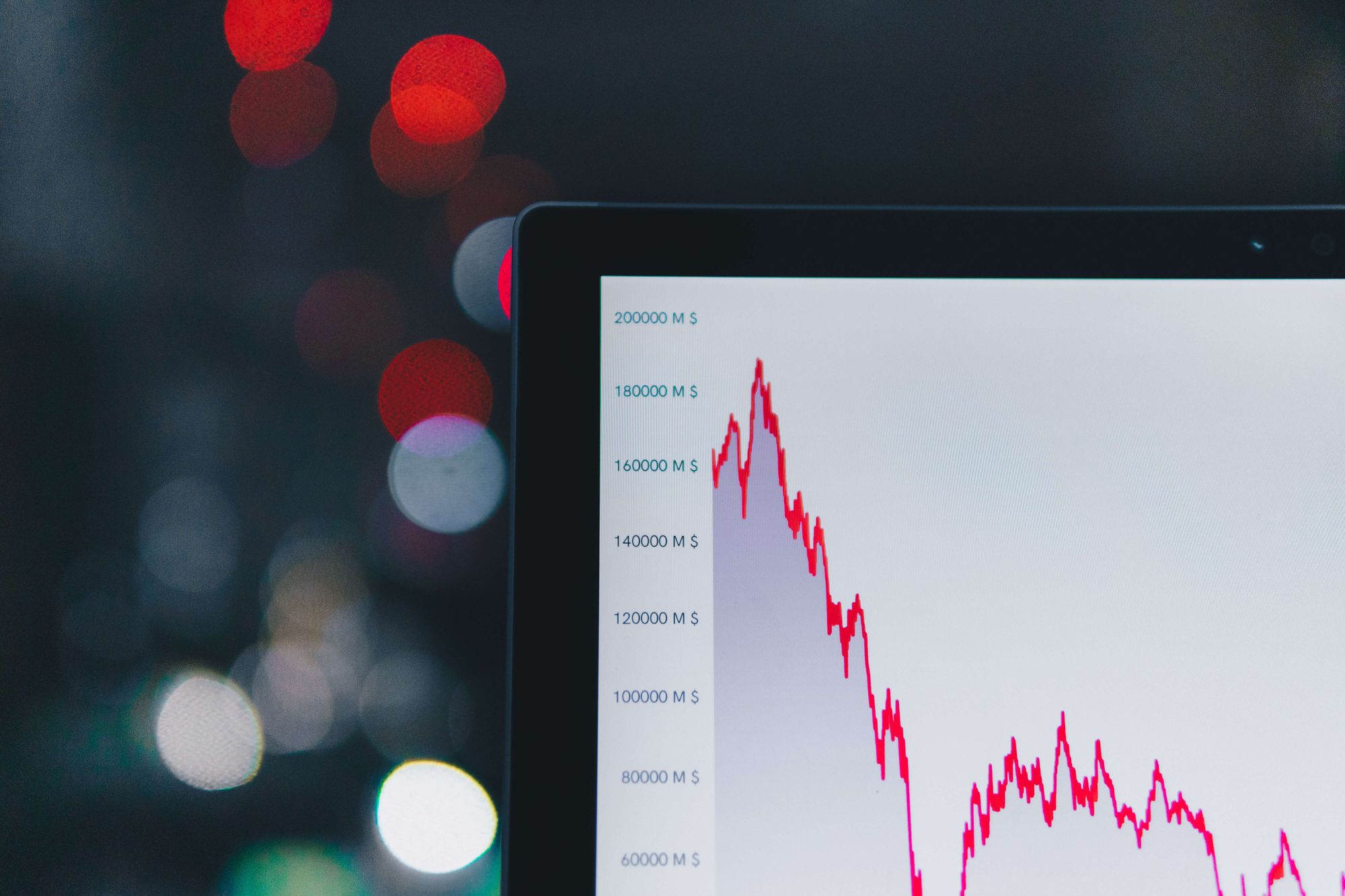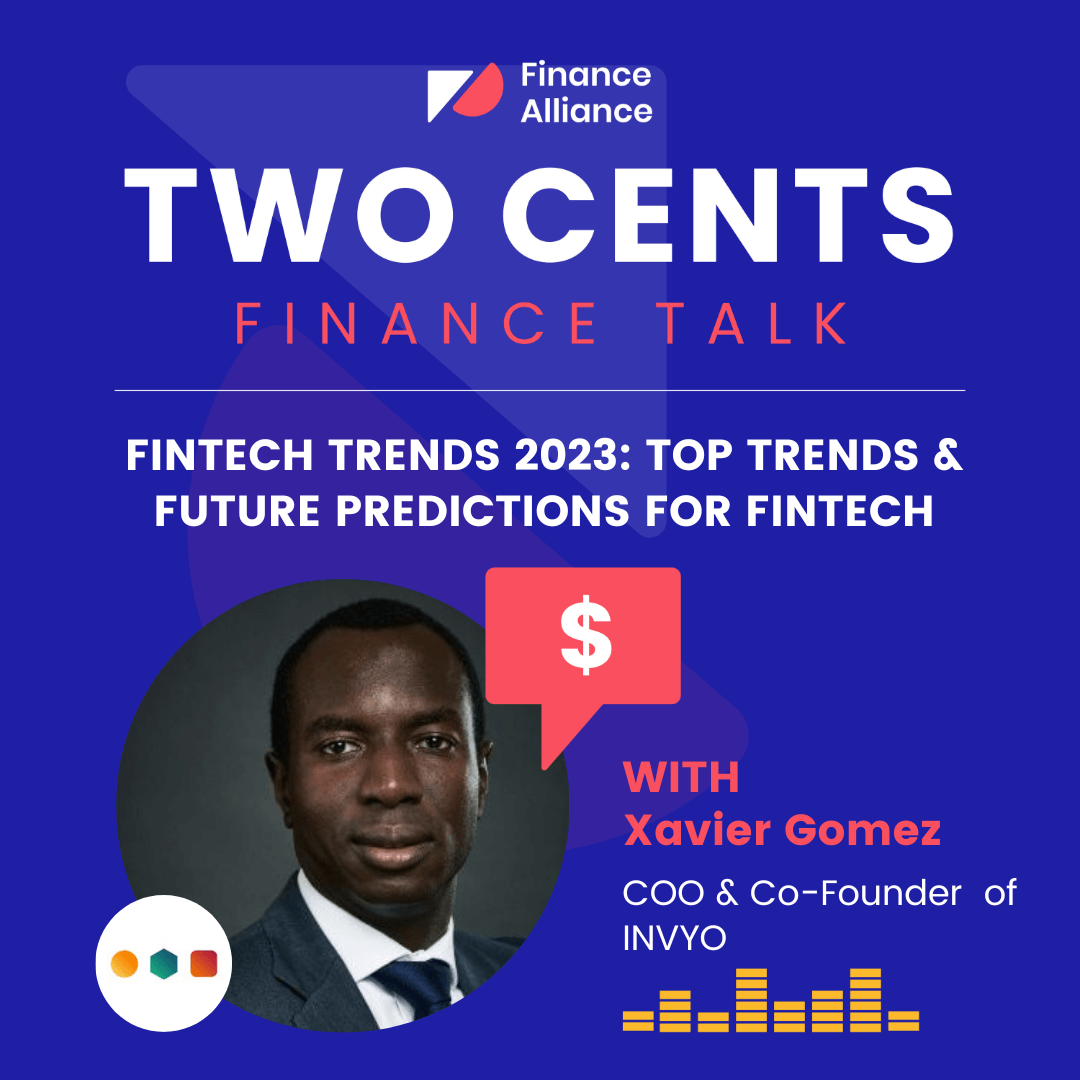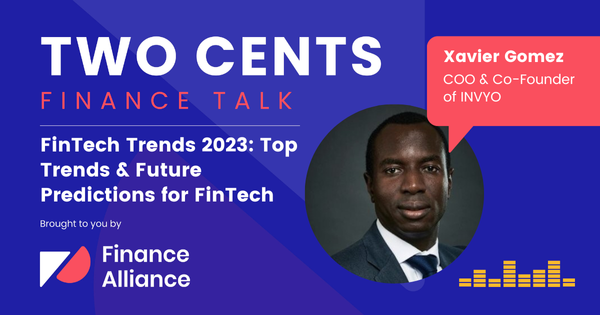What does the future hold for FinTech?
In this episode of the Two Cents: Finance Talk podcast, Xavier Gomez, the COO and Co-Founder of INVYO, shares his top 3 predictions for FinTech Trends in 2023.
But that's not all, he also goes into detail about how these new trends in FinTech will impact the global economy.
You can listen to the full episode below:
Or, if you prefer, keep reading to learn more about FinTech Trends for 2023.
Xavier covers topics such as:
- Top 3 FinTech trends to watch in 2023
- Gamification: Linking gaming and finance
- Will blockchain become a bigger part of our everyday lives?
- How new trends in fintech will impact the global economy
- How previous FinTech trends are performing
- The metaverse and why it's top of mind for many professionals
Top 3 FinTech trends to watch in 2023
Q. What do you think will be the top 3 FinTech trends to watch in 2023?
1.Blockchain technology
I’d first like to start with blockchain technology. This year has been a rollercoaster for the crypto industry and investors. The market was valued at two trillion dollars and has mostly evaporated.
We are in a transition period today as you can see lots of investment and creation in this particular industry to invest in blockchain infrastructure, mostly in crypto exchange.
This is a new trend because this building of infrastructure has a different application for finance between the banks and the central banks’ equation of digital money.
In terms of business in the gaming sector, there’s a lot of flow from GameFi, gaming, and finance. People like to pay to earn, and younger people are also willing to pay to see other people play games, particularly on Twitch. This is a new business model in parallel with the development of Web3. It's a huge trend and you have big players in a different ecosystem and the creation of different blockchains on Web3.
Blockchain technology aims to address a different issue in terms of increasing speed and security, in particular with international payments. Payments and blockchain are deeply linked with banks to become mainstream in the coming years.
2. Embedded finance
Another trend would be embedded finance, which refers to the integration of financial tools or services within the offering of a non-financial institution. This is a big competitive area for regular institutions because it comes with new infrastructure, more services, and a bigger capacity to integrate into any IT infrastructure.
The ecosystem of embedded finance covers financial services such as banking, credit, and investments, and extends its reach to adjacent areas like payments, processing, and insurance.
The most well-known form of embedded finance is buy now pay later (BNPL). This payment option allows people to buy a product now and pay for it later, usually by splitting the purchase into multiple installments to be paid at set times.
3. Alternative financing
The last trend to watch out for would be alternative financing. The COVID-19 virus has left its mark on almost every corner of the world. According to 2021 surveys, a large portion of bank leaders didn't reduce the amount of capital dedicated to supporting trade.
The global trade finance gap is still steadily widening, and this is where alternative financing comes into play. Alternative finance refers to the business funding offered by non-banking institutions. And some of this funding doesn’t end up becoming a loan at all.
The emergence of non-finance institutions is a big change and means big competition for traditional banks or financial institutions.
Currently, there is not a huge competition against regular financial institutions, but you can certainly see significant growth. The valuation of this market is between two and seven billion and is growing every year from 6%-10%.

Gamification: Linking gaming and finance
Q. Could you tell us a bit more about GameFi?
A: As I mentioned before, this is the link between gaming and finance. Today, Gamification (GameFi) refers to play-to-earn blockchain games which offer an economic incentive to players. Typically, players can earn cryptocurrency and NFT rewards by completing a task, battling other players, and progressing through the different game levels.
Unlike traditional video games, most blockchain games let players transfer items out of the game’s virtual walls. Players can trade their items on NFT and cryptocurrency exchange marketplaces.
GameFi has rapidly been taking over the traditional gaming industry since the rise of Axie Infinity. It attracts gamers by offering them an opportunity to make money while also having fun.
Now with the development of blockchain, you have a deep link with virtual worlds. And you can see the merger between blockchain, infrastructure, Web3, and a new business model. It’s a new world where people are ready to play to receive rewards on tokens or crypto.
Big brands are also ready to make advertisements in order to attract consumers to these types of games. This is a new concept and new business model to discover in the coming years, and each GameFi project will adopt a different model in the game economy.
In most cases for in-game assets, NFTs run on the blockchain, which means they can be traded on the NFT marketplace. However, in-game assets need to be converted into an NFT before players can trade or sell them.
Will blockchain become a bigger part of our everyday lives?
Q. Just like digital banking has become a part of our lives, perhaps tokenized assets and blockchain will also be used much more in the coming years. What do you think about this?
A: Exactly. We can see that play-to-earn is a revolutionary gaming mode, and it's very different from the pay-to-play model adopted by traditional video games. Pay-to-play requires gamers to invest before they can start playing. For example, famous video games like Call of Duty require players to purchase licenses or recurring subscriptions.
Traditional video games will not generate any financial returns for players, and their in-game assets are controlled and held by the gaming company. In contrast, play-to-earn games give players full control over their in-game assets while also offering opportunities for them to make money. This is a completely new internal business model, and very a interesting one.

How new trends in fintech will impact the global economy
Q. How do you think these new trends and developments in the fintech industry will impact the global economy?
A: When you manage money today, you have to be regulated. Tomorrow, all the big players will be non-financial companies that manage payments, so they will have to be compliant. With the current trend, money and traditional financial institutions will become a commodity because they will be competing with a whole other player in any industry, particularly gaming because you don't have any friction.
Regulation relies on the values of the young generation such as Generation Alpha and Generation Z. They may not understand compliance requirements in terms of compliance, money laundering, and anti-terrorism action.
This is why I would say to watch out because malicious players have the potential to come into this kind of industry. We have to regulate softly for now as this industry is new, however, it has big growth potential.
How previous FinTech trends are performing
Q. Have any of the trends we’ve talked about in the last five years already plateaued? Are they already part of the new normal and not a subject of excitement anymore?
A: I used to work as a trader and fund manager, where the quants guys used to sit near salespeople and traders on the trading floor. Over time, the salespeople and traders have been replaced by quants on the trading floor. So now you have two or three real traders and the rest are automated with algorithms. The quants are just there to check that everything is working.
Transactions are the same. There is a model in place of ‘do it yourself’. You have an API connected with your client, your client sends you an order, and you don't require any more sales. And behind that process is technology, a quant, and an algorithm.
This change was also good for the banks because they have different regulations in terms of working capital with Basel III. You should drastically reduce the operating cost if you want to stay competitive and if you’re going to work on this kind of operation.
It is the new normal today. Even I have made big moves and replaced most of the sales and traders with a quant, data scientist, and data engineer.

The metaverse and why it's top of mind
Q. If you had to name one app, platform, or technology that you're going to follow next year, what would it be?
A: It's not directly linked with finance or fintech, but I would say the metaverse. As you know, Meta (previously known as Facebook) made a big bet on the metaverse and invest a billion US dollars per year. JP Morgan has also invested a lot of money to propose some services in different metaverse worlds.
The metaverse should be a good thing, but it could also be risky in terms of society. It is a virtual world, and perhaps some of us will not make the distinction between what you can do in the real world versus the metaverse.
Of course, you have to pay for this kind of service, and we can see from news stories that people spend a lot of money to play with or buy something because there’s no friction, it's very easy. And some platforms even give you credits to consume their content and so on.
From a technological perspective, it's a big step because it requires a lot of machine learning, AI, data, and good user design and definition. But also in terms of the real world and particularly for the younger generation, we have to be careful.
Q. The regulations on metaverse or tokenized assets remain a big question mark. In the future, do you think that it’s going to be more regulated?
A: Yes of course. We’ve already heard stories of bad behaviors happening in the metaverse against women and certain populations. In the real world, this would not be accepted, so of course, we have to regulate it a little bit. What you’re allowed to do in the metaverse will be aligned with what you’re allowed to do in reality.
About the guest

Xavier Gomez is the COO and Co-Founder of INVYO, a data management startup that uses machine learning and natural language processing to help corporations identify tomorrow's opportunities in the financial industry. He is also a regular columnist on the television news channel, BFM Business.



 Follow us on LinkedIn
Follow us on LinkedIn




